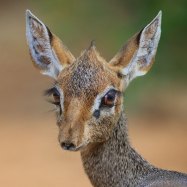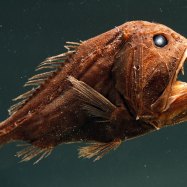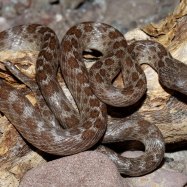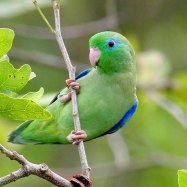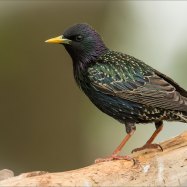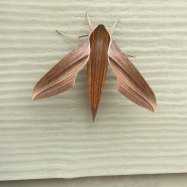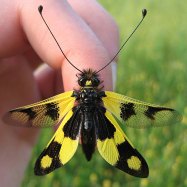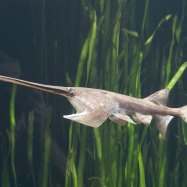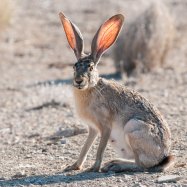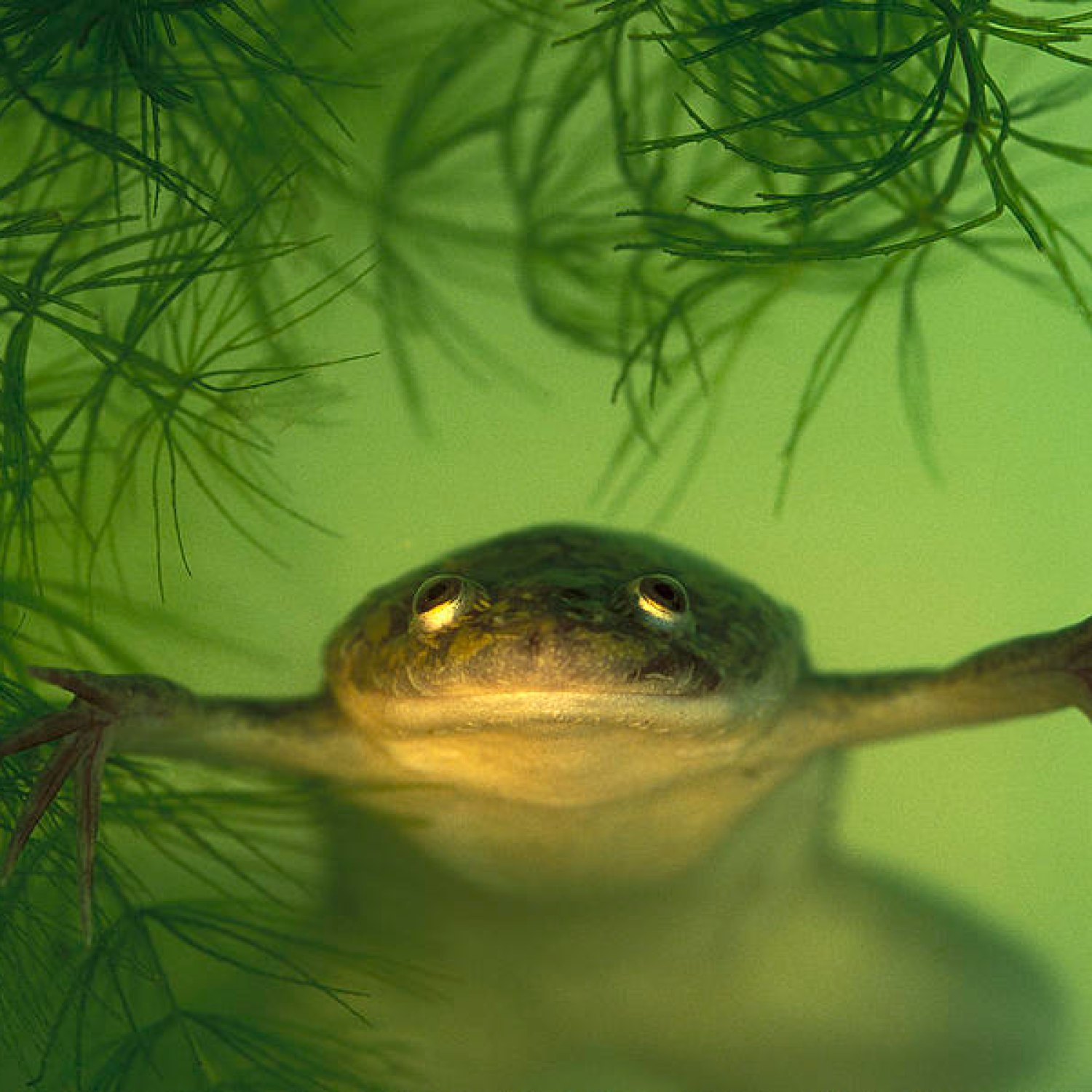
African Clawed Frog
7-12 centimeters (2.8-4.7 inches)
Meet the agile African Clawed Frog, found in African countries and other parts of the world due to human introduction. They can grow up to 7-12 centimeters and have a sleek, streamlined body. This frog is a member of Pipidae family and is known for its speedy swimming and unique clawed feet. Keep an eye out for this fascinating frog in ponds and lakes! #Africanclawedfrog #Pipidae #slenderbody #agileswimmer
Animal Details Summary:
Common Name: African Clawed Frog
Kingdom: Animalia
Habitat: Freshwater habitats, such as ponds, streams, and marshes
The Fascinating World of the African Clawed Frog
Amphibians are a diverse group of animals that have adapted to life both on land and in water. While many are familiar with the brightly colored and noisy frogs found in tropical rainforests, few may know about the African Clawed Frog (Xenopus laevis). This small but fascinating creature has adapted to become fully aquatic and is found in a variety of freshwater habitats. In this article, we will dive into the world of the African Clawed Frog and explore its unique features, behaviors, and role in the ecosystem African Clawed Frog.The Basics
The African Clawed Frog belongs to the kingdom Animalia, the phylum Chordata, and the class Amphibia. Its scientific name is Xenopus laevis, loosely translated as "smooth clawed." It is also commonly known as the African Clawed Frog due to its distinctive three-clawed hind limbs. These frogs can typically reach a length of 7-12 centimeters (2.8-4.7 inches) and have a lifespan of up to 15 years in captivity.Habitat and Distribution
The African Clawed Frog is native to sub-Saharan Africa, specifically in countries such as South Africa, Mozambique, and Zambia. It is primarily found in freshwater habitats, including ponds, streams, and marshes, where it can burrow into the muddy bottom. It is a highly adaptable species and can even survive in polluted or oxygen-deprived waters, making it common in urban areas Alpaca.Due to their use in scientific research and as pets, African Clawed Frogs have been introduced to other parts of the world, including the United States. However, the release of these frogs into the wild has caused concern as they can outcompete native species and spread diseases.
Physical Characteristics
One of the most noticeable features of the African Clawed Frog is its coloration and body shape. These frogs are usually olive green, brown, or gray with a mottled pattern of dark spots on their body. This pattern serves as camouflage, helping them blend into their surroundings.Their body shape is another adaptation for their aquatic lifestyle. Unlike most frogs, the African Clawed Frog has a slender and streamlined body, with a flattened head and webbed front and hind feet. The webbing on their feet allows them to move through the water efficiently, and their eyes and nostrils are located on the top of their head, enabling them to breathe and see while mostly submerged.
Feeding Habits
As carnivorous animals, the African Clawed Frog feeds on a wide range of prey, including insects, crustaceans, worms, and small fish. They are ambush predators, lying still and waiting for prey to swim by before pouncing and consuming it in one swift motion.Their unique method of feeding, known as lingual feeding, is also a noteworthy characteristic. Unlike most frogs that use their tongues to catch prey, the African Clawed Frog has no tongue. Instead, they have flat, bony projections on their lower jaw that they use to catch and crush their prey against the roof of their mouth.
The Magical World of Metamorphosis
One of the most remarkable things about the African Clawed Frog is its ability to change from a tadpole to an adult frog through a process called metamorphosis. This transformation is a crucial part of its life cycle and involves several physical and behavioral changes.The first stage of metamorphosis is the egg stage, where the fertilized egg develops into a tadpole. The next stage is the tadpole stage, where the tadpole has a long tail, gills, and no legs. As they grow, they develop front and hind legs, lose their gills, and develop lungs for breathing air. Finally, they undergo a transformation into a frog, where their front legs and hind legs become stronger, their tail is absorbed, and they can fully emerge onto land.
This ability to transform from a water-dependent tadpole to an air-breathing adult frog is essential for the African Clawed Frog's survival and is a testament to their incredible adaptation to their environment.
Role in the Ecosystem
The African Clawed Frog plays a vital role in the ecosystem as both predators and prey. By feeding on a variety of prey, they help regulate population sizes and maintain balance in freshwater habitats. They are also a food source for snakes, birds, and larger frogs.Additionally, their tadpoles serve as filter feeders, consuming algae and other small organisms, helping improve water quality. In captivity, African Clawed Frogs are also used as bioindicators, meaning any changes in their health or behavior can indicate changes in the aquatic environment's health.
Threats and Conservation
Despite being listed as least concern by the International Union for Conservation of Nature (IUCN), African Clawed Frogs face several threats to their survival. Habitat destruction, pollution, and the introduction of non-native species are the main factors endangering their populations in their native range. In the United States, they are considered an invasive species and are illegal to own or release into the wild.One significant conservation effort for the African Clawed Frog is their use in scientific research. Due to their unique reproductive abilities and medical industry value, they are used in various research studies, including cancer research, toxicology, and developmental biology. However, this has also led to their widespread distribution outside their native range, causing potential ecological and ethical concerns.
The Fascinating World of African Clawed Frogs
In conclusion, the African Clawed Frog is a remarkable creature that has adapted to life solely in the water. From its unique coloration, physical characteristics, and fascinating feeding habits, to its ability to transform through metamorphosis, the African Clawed Frog continues to captivate scientists and nature enthusiasts alike.As a crucial part of the ecosystem, it is essential to protect and conserve their populations in their native habitat and manage their distribution outside their natural range. Through education and awareness, we can appreciate and understand the vital role these frogs play in our world and ensure their survival for future generations to come.

African Clawed Frog
Animal Details African Clawed Frog - Scientific Name: Xenopus laevis
- Category: Animals A
- Scientific Name: Xenopus laevis
- Common Name: African Clawed Frog
- Kingdom: Animalia
- Phylum: Chordata
- Class: Amphibia
- Order: Anura
- Family: Pipidae
- Habitat: Freshwater habitats, such as ponds, streams, and marshes
- Feeding Method: Carnivorous
- Geographical Distribution: Sub-Saharan Africa
- Country of Origin: South Africa
- Location: African countries, as well as other parts of the world due to introduction
- Animal Coloration: Olive green, brown, or gray with dark spots
- Body Shape: Slender and streamlined
- Length: 7-12 centimeters (2.8-4.7 inches)
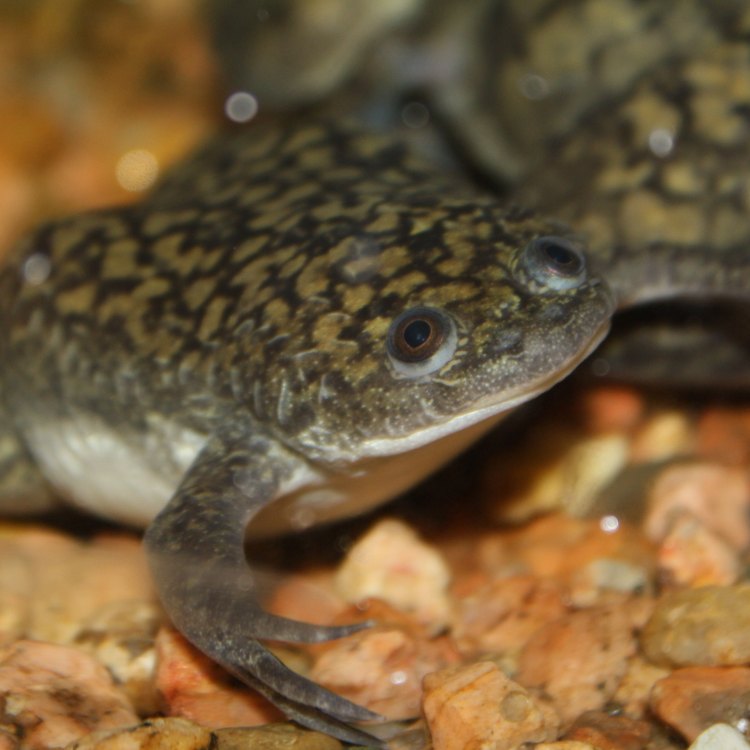
African Clawed Frog
- Adult Size: 10-18 centimeters (4-7 inches)
- Average Lifespan: 10-15 years
- Reproduction: Eggs
- Reproductive Behavior: Explosive breeders, mating occurs during rainy seasons
- Sound or Call: Males produce loud, barking calls
- Migration Pattern: Non-migratory
- Social Groups: Solitary
- Behavior: Nocturnal, primarily active during the night
- Threats: Habitat loss, pollution, and invasive species
- Conservation Status: Least Concern
- Impact on Ecosystem: Can disrupt native ecosystems as invasive species
- Human Use: Laboratory research, former use in pregnancy testing
- Distinctive Features: Sharp claws on hind feet
- Interesting Facts: African Clawed Frogs lack a vocal sac, so they produce sounds by pumping air into their lungs and then expelling it.
- Predator: Various aquatic and terrestrial predators
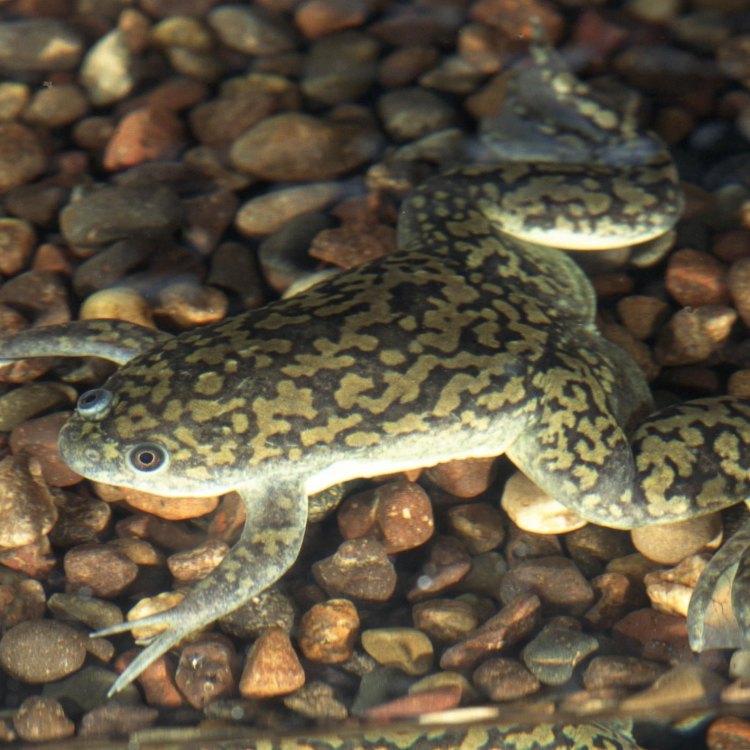
Xenopus laevis
The Evolution and Unique Features of the African Clawed Frog
Nature never ceases to amaze us with its diverse array of creatures. From the depths of the ocean to the highest mountains, there are thousands of species that have evolved to thrive in their specific environments. One such species that has caught the attention of humans for centuries is the African Clawed Frog, also known by its scientific name, Xenopus laevis.This fascinating amphibian is native to the sub-Saharan region of Africa and has captured the fascination of scientists and nature enthusiasts alike PeaceOfAnimals.Com. Its distinctive features, reproductive behavior, and transformative history make for a fascinating study in evolutionary biology. In this article, we will delve into the world of the African Clawed Frog and discover its unique adaptations and role in the ecosystem.
Anatomy and Appearance
The African Clawed Frog is a medium-sized amphibian, growing to an average length of 10-18 centimeters (4-7 inches) as an adult. It has a flattened, elongated body and a triangular-shaped head with bulging eyes on the sides. Its skin is smooth and moist, varying in color from brown, gray, or green, with mottled patterns to camouflage in its surroundings.One of the most distinctive features of the African Clawed Frog is its sharp claws on its hind feet, from which it gets its name. These claws are used for digging, climbing, and defense against predators. The front feet have four digits, while the hind feet have five digits, and all have webbed toes to aid in swimming.
Reproduction and Behavior
The reproductive behavior of the African Clawed Frog is unique and has earned it the nickname of "explosive breeders Anomalocaris." This means that they mate quickly and in large numbers during their breeding season, which usually occurs during the rainy season between September and February.During this time, the females release around 2,000-4,000 eggs per clutch, which are fertilized by the males externally. The fertilized eggs then develop into tadpoles, and within six weeks, they grow into adult frogs.
Another interesting aspect of their behavior is their nocturnal nature. They are primarily active during the night, foraging for food and avoiding predators. They are solitary creatures, only coming together during mating season.
Sounds and Calls
Male African Clawed Frogs are known for their loud, barking calls, which they use to attract females during mating season. These calls are produced by inflating a vocal sac, a common feature in most frogs. However, what makes these frogs unique is that they lack a vocal sac.So how do they produce these loud calls? Unlike most frogs, who push air out of their vocal sac, African Clawed Frogs pump air into their lungs and then expel it, creating a distinct barking sound. This unique method of sound production has captivated researchers and continues to raise questions about the vocal abilities of these frogs.
Evolution and Adaptations
The African Clawed Frog has a long evolutionary history, dating back over 200 million years. They belong to the family Pipidae, the only surviving family of the order Anura that evolved during the Triassic Period.One of its most notable adaptations is its ability to survive in harsh and dry environments. African Clawed Frogs have developed a layer of mucus over their skin, allowing them to retain moisture and survive for long periods without water. They also have strong claws on their hind feet and powerful hind legs, enabling them to dig deep burrows to escape heat and drought.
Human Use
The African Clawed Frog has had a long history of use in human research. In the 1930s, they were used for human pregnancy testing, as their eggs release hormones in the presence of a pregnant woman's urine. This method was widely used until the 1960s when alternatives became available.Today, these frogs are primarily used in laboratory research due to their unique characteristics and close genetic relation to humans. They are also popular in the pet trade, although their import and export have been restricted to prevent the spread of diseases and invasive species.
Threats and Conservation Status
The African Clawed Frog, despite its extraordinary adaptations and long evolutionary history, is facing numerous threats in its natural habitat. The main cause is habitat loss due to urbanization and agriculture, which has resulted in a decline in their population.Pollution and the introduction of invasive species, such as the American bullfrog, also pose significant threats to these frogs. In their native habitat, these frogs played a vital role in keeping insect populations in check. However, with increasing threats, their populations are declining, resulting in a disruption of the ecosystem.
Currently, the African Clawed Frog is listed as least concern on the International Union for the Conservation of Nature (IUCN) Red List, with stable populations in most regions. However, continuous monitoring and conservation efforts are necessary to ensure their survival in the wild.
The Impact on Ecosystems
As with any species, the African Clawed Frog plays a crucial role in its ecosystem. However, when introduced to new habitats, they can have negative impacts as invasive species. These frogs have been unintentionally introduced to various regions, including Europe, South America, and the United States.As predatory amphibians, they compete with native species for food and can even prey on them, causing a decline in local populations. In some areas, they have also been found to carry and transmit diseases to native species, causing further harm to the ecosystem.
A Creature of Mystery and Wonder
The African Clawed Frog is truly a creature of mystery and wonder. Its unique features and behaviors have captivated scientists and nature enthusiasts for generations. From its explosive breeding habits to its distinctive vocalizations, this amphibian offers endless opportunities for research and discovery.As with any living being, it is crucial to protect and preserve these fascinating creatures and their habitats. Through education, conservation efforts, and responsible pet ownership, we can ensure that the African Clawed Frog continues to thrive and amaze us for centuries to come. So, the next time you hear a barking sound in the night, remember, it could be the call of an African Clawed Frog, a reminder of the marvels of the natural world.
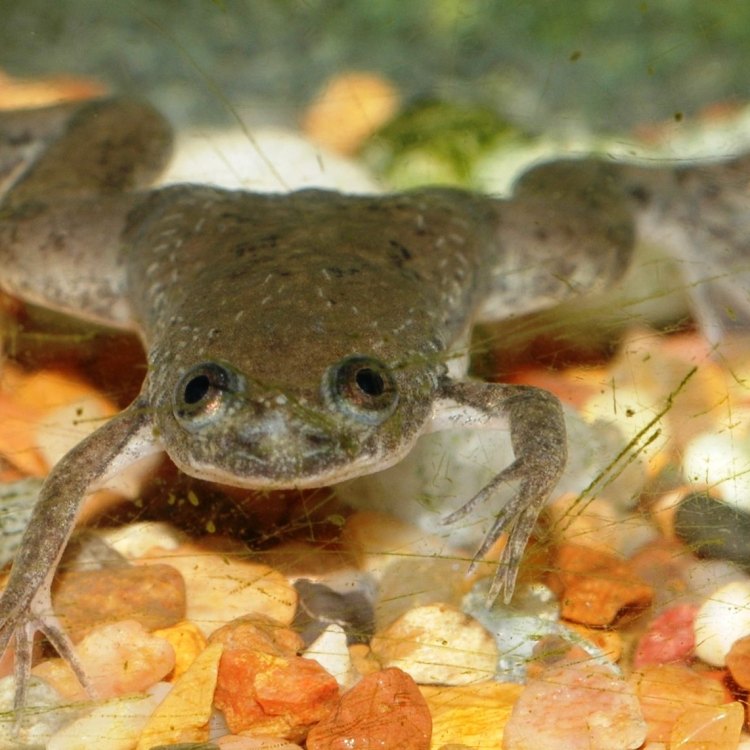
The Fascinating World of the African Clawed Frog
Disclaimer: The content provided is for informational purposes only. We cannot guarantee the accuracy of the information on this page 100%. All information provided here may change without prior notice.

